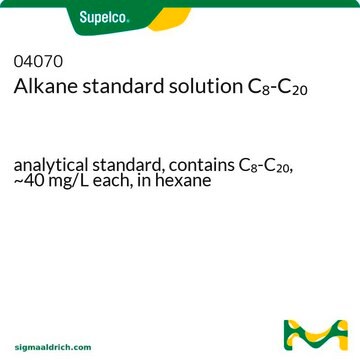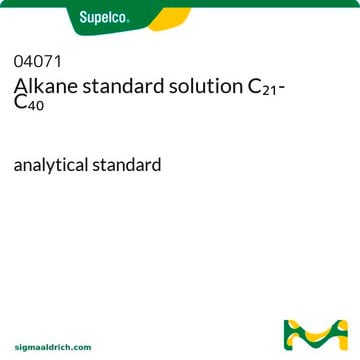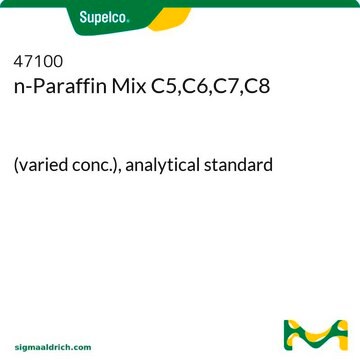40147-U
C8-C40 Alkanes Calibration Standard
in dichloromethane (varied)
About This Item
Productos recomendados
CofA
current certificate can be downloaded
Quality Level
packaging
pkg of 1 mL
concentration
in dichloromethane (varied)
technique(s)
HPLC: suitable
gas chromatography (GC): suitable
application(s)
petroleum
format
multi-component solution
storage temp.
2-8°C
Application
Other Notes
Analito
signalword
Warning
hcodes
Hazard Classifications
Carc. 2 - Eye Irrit. 2 - Skin Irrit. 2 - STOT RE 2 - STOT SE 3
target_organs
Central nervous system, Peripheral nervous system,Central nervous system,Cardio-vascular system,Eyes
Storage Class
6.1D - Non-combustible acute toxic Cat.3 / toxic hazardous materials or hazardous materials causing chronic effects
wgk_germany
WGK 2
flash_point_f
Not applicable
flash_point_c
Not applicable
Elija entre una de las versiones más recientes:
¿Ya tiene este producto?
Encuentre la documentación para los productos que ha comprado recientemente en la Biblioteca de documentos.
Los clientes también vieron
Nuestro equipo de científicos tiene experiencia en todas las áreas de investigación: Ciencias de la vida, Ciencia de los materiales, Síntesis química, Cromatografía, Analítica y muchas otras.
Póngase en contacto con el Servicio técnico








